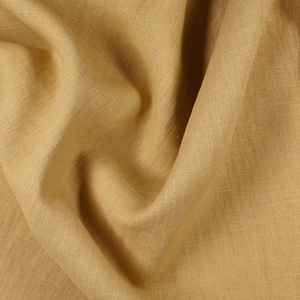Alexander the Great Wore Linen Armor?
When the word linen comes to my mind I think of myself relaxing outdoors on a day off from work, decked out in a lightweight linen outfit and enjoying the sun. I can close my eyes and just feel that subtle breeze breathing through my shirt right now — Ahhhhh yes.
What doesn’t come to my mind is the ancient Grecian emperor Alexander the Great. In fact, Alexander the Great is probably the farthest thought from my mind. Okay maybe there are thoughts farther off in the distance like deep cave spelunking or the nose-hair removal habits of my father. But Alexander is still pretty far down the list.Let’s get to the point though. What does a man who lived more than 2,000 years ago and whose main profession was conquering have in relation with linen?
Well my friends, it has been found that linen may have helped Alexander the Great (356-323 B.C.) conquer the Persian Empire, which at the time was basically the entirety of the known world. It is believed that Alexander and his troops wore linen armor. Now I am not talking about the linen shirt that I am wearing in my daydream right now, but actual linen armor. This form of protective wear is called linothorax and is made by laminating multiple pieces of linen together. The end result yields a product which is pretty much the Kevlar of the ancient world. Don’t believe me?
Gregory Aldrete, a professor of history and humanistic studies at the University of Wisconsin-Green Bay and his co-investigator, Scott Bartell, decided to test this primitive style of body armor. By using linen laminated together by glues that derived from rabbit skin and flax seeds (both men wanted to use the materials that would be readily available in the ancient world) Aldrete and Bartell recreated the armor. Upon completion the linothorax received the same treatment I usually get at the dental office. The cloth armor was bombarded with arrows, slashed with swords, chopped with axes and prodded with spears. However, Alexander the Great’s prequel to Kevlar did not disappoint. The flexibility of the fabric evenly dispersed the force of the blows and the linothorax held its ground.
At the conclusion of the test, linen expert Heidi Sherman stated that the fabric could take “quite a rigorous beating” and “provide ample protection under extreme conditions.” Something I am sure Alexander needed it to do as he fought his way halfway across Asia.But how do they know Alexander used linothorax to outfit his army? Well, fabrics tend to perish upon thousands of years of neglect, so there are no “Alexander the Great endorsed linothorax breastplates” lying around anymore. However, historical records have come to the rescue.
A mosaic of Alexander the Great displays the emperor riding into battle wearing armor made from laminated linen.  Now I may just have an untrained eye to what linothorax actually looks like but this mosaic doesn’t have me completely sold. However, the writing of Greek historian Plutarch does. In Plutarch’s “Life of Alexander,” Plutarch discloses that Alexander the Great “wore a breastplate of folded linen” at the battle of Gaugamela in 331 B.C. This was the pivotal battle leading to the decimation of the Achaemenid Empire. Complimentary to this, historian Aldrete states that when Alexander ordered 25,000 new suites of armor for his army, he demanded the old ones to be burned. This could only be done if the armor was made of fabric and not metal. Maybe that’s where they’ve all gone!
Now I may just have an untrained eye to what linothorax actually looks like but this mosaic doesn’t have me completely sold. However, the writing of Greek historian Plutarch does. In Plutarch’s “Life of Alexander,” Plutarch discloses that Alexander the Great “wore a breastplate of folded linen” at the battle of Gaugamela in 331 B.C. This was the pivotal battle leading to the decimation of the Achaemenid Empire. Complimentary to this, historian Aldrete states that when Alexander ordered 25,000 new suites of armor for his army, he demanded the old ones to be burned. This could only be done if the armor was made of fabric and not metal. Maybe that’s where they’ve all gone!
So yes, there is a pretty convincing argument that linen was used to protect one of the greatest emperors in all of history. How cool is that? A fabric that today is generally celebrated for its loose-casual nature was being utilized for its toughness and durability thousands of years prior. What a diverse fabric huh?If my little brother starts chasing me around with his wooden sword again you can bet I’m heading straight for the linen drapes!











































9 Comments
Ann
silk caps were also used in other cultures to deflect arrows.
sometimes the protecting lies where we aren’t looking.
Ann
Basically fibreglass
Bambi Greer
This article is very interesting and so have the others been. We are never to old to learn the past as out past is what makes us.
Gida Darling
Hello,
I love your email blog posts – always cheerful and fascinating. I hope business is booming as a result.
Barry Ford
This was a fascinating article. Thanks for it. I wish you had a Facebook share button on the page, so I could share it with my friends there.
William Marlow
It is not the weight of the canvas but the number of layers and the glue which binds them together.
A friend of mine, Mathew Amt, Has constructed a linothorax. Check out his experience at http://www.larp.com/.
Greycloake
Evelyn Simpson
I too am interested in reproducing this “armor”. If you make this I will purchase it.
Marvin Dodson
I would very much like to reconstruct a linothorax for historical re-enactment, however, you apparently don’t carry the appropriate kind of linen cloth for this. A heavy linen canvas (canvas as in tent or sail cloth weight canvas, not painter’s canvas)is required. Linen fabric which you call “heavy” or “canvas” is really more medium weight and not adequate for this project. I would love it if you would carry the truly heavy weight linen canvas.
Sincerely,
Marvin Dodson
Ann
and polyester was the modern precursor to Kevlar!
Being a natural fiber aficionado (Linen, Silk & Wool are my favorites!), I am convinced that polyester double knit is bullet proof and the forerunner to Kevlar. Think about it,polyester NEVER wears out. You can try to throw it away but it will crawl back out of the garbage can and back into your house… EUWWW…
and don’t even bring up polar fleece – why do you want to wear recycled water bottles? Wear a big plastic bag — UGH!